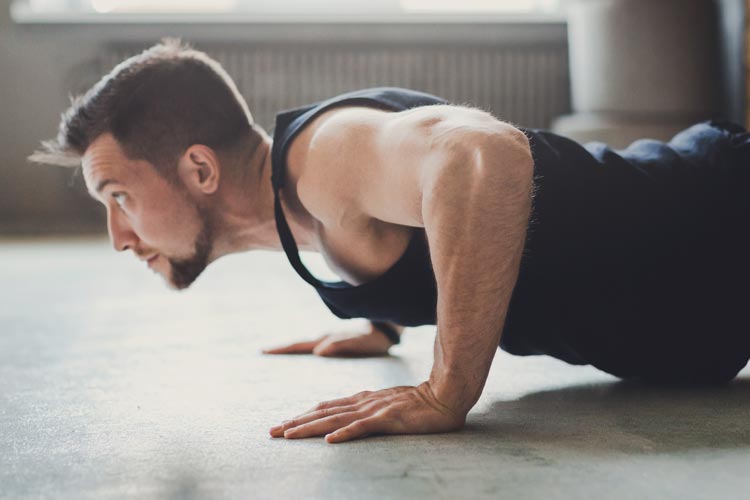Working out is a crucial aspect of maintaining a healthy lifestyle, but there are numerous myths surrounding exercise that can lead to confusion and misinformation. In this article, we'll debunk nine common myths about working out and provide you with the facts you need to make informed decisions about your fitness routine.
Myth 1: More Sweat Means More Calories Burned

Many people believe that the amount they sweat during a workout is directly proportional to the number of calories burned. However, sweating is simply your body's way of cooling down and regulating temperature, and it doesn't necessarily correlate with calorie expenditure. You can sweat profusely during a workout and still burn fewer calories than someone who sweats less but works out more intensely.
Myth 2: Crunches are the Best Way to Get Abs
Crunches are a popular exercise for targeting the abdominal muscles, but they're not necessarily the most effective way to get a six-pack. While crunches can strengthen your core, they primarily work the rectus abdominis muscle and neglect other important muscles in the core, such as the obliques and transverse abdominis. Incorporating a variety of exercises, such as planks, Russian twists, and leg raises, can help you achieve a more balanced and defined midsection.
Myth 3: You Need to Exercise for Hours Every Day
Contrary to popular belief, you don't need to spend hours in the gym every day to see results. In fact, long, grueling workouts can lead to burnout and overtraining, ultimately hindering your progress. Instead, focus on the quality of your workouts rather than the quantity. Shorter, more intense workouts can be just as effective, if not more so, than longer sessions, especially when combined with proper nutrition and adequate rest.
Myth 4: Weightlifting Will Make Women Bulky
One of the most pervasive myths in the fitness industry is that weightlifting will cause women to become bulky and overly muscular. In reality, women have lower levels of testosterone than men, which makes it much more difficult for them to bulk up. Instead, weightlifting can help women build lean muscle mass, increase metabolism, and achieve a toned, sculpted physique.
Myth 5: No Pain, No Gain

The saying "no pain, no gain" suggests that you need to push yourself to the brink of pain and discomfort in order to see results from your workouts. While it's true that some level of discomfort is often necessary for progress, it's important to distinguish between discomfort and actual pain. Pushing through pain can lead to injury and setbacks, so listen to your body and know when to dial back the intensity.
Myth 6: Cardio is the Only Way to Lose Weight
While cardiovascular exercise certainly plays a role in weight loss, it's not the only factor to consider. Strength training is equally important, if not more so, for building lean muscle mass and boosting metabolism. Additionally, focusing solely on cardio can lead to muscle loss and a slower metabolism over time. For optimal results, incorporate a mix of cardio and strength training into your workout routine.
Myth 7: You Can Spot Reduce Fat
Many people believe that they can target specific areas of the body for fat loss through exercises like crunches or leg lifts. However, spot reduction is a myth; you can't selectively burn fat from one area of the body. Instead, fat loss occurs throughout the body in response to a calorie deficit created through diet and exercise. To lose fat in a specific area, you need to focus on overall fat loss through a combination of cardiovascular exercise, strength training, and a healthy diet.
Myth 8: You Can't Build Muscle After 40
Another common misconception is that it's impossible to build muscle after the age of 40. While it's true that muscle mass naturally declines with age, regular strength training can help mitigate this loss and even promote muscle growth. Older adults may need to adjust their training methods and recovery strategies, but they can still make significant gains in strength and muscle size well into their later years.
Myth 9: You Need Supplements to Build Muscle

Supplements can be a useful tool for supporting your fitness goals, but they're not essential for building muscle. A well-rounded diet that includes an adequate amount of protein, carbohydrates, fats, vitamins, and minerals is usually sufficient for most people to make progress in the gym. While certain supplements, such as protein powder or creatine, may offer some benefits, they should be viewed as supplements to a healthy diet and exercise routine, not replacements for them.
Conclusion
In conclusion, it's important to separate fact from fiction when it comes to working out. By debunking these common myths and focusing on evidence-based practices, you can optimize your fitness routine and achieve your goals more effectively. Remember to listen to your body, prioritize quality over quantity, and stay consistent in your efforts. With the right approach, you can unlock your full potential and enjoy the many benefits of regular exercise.